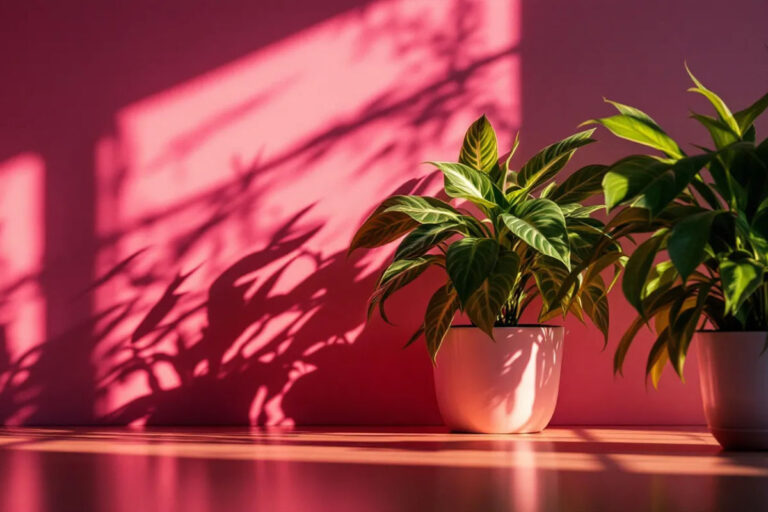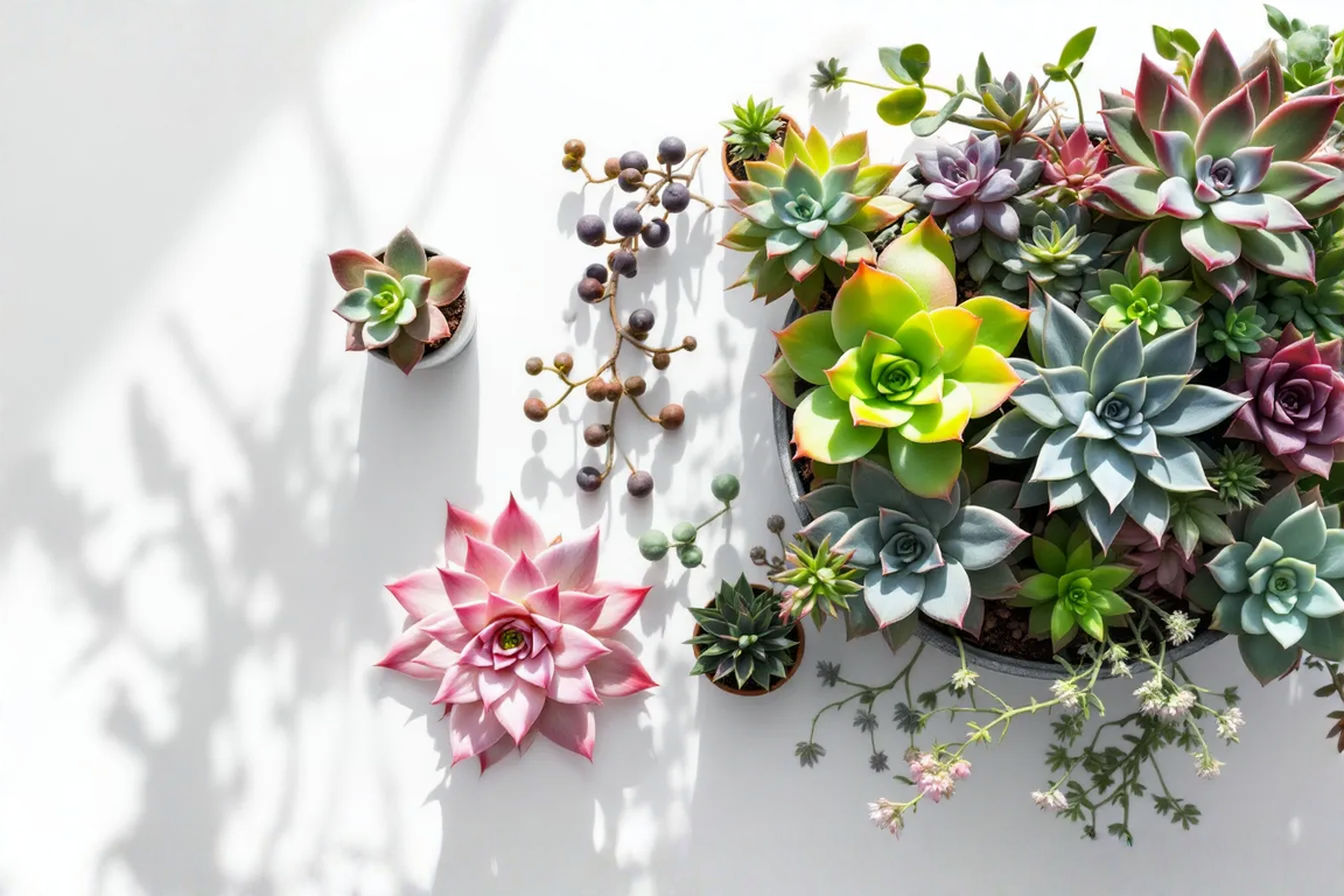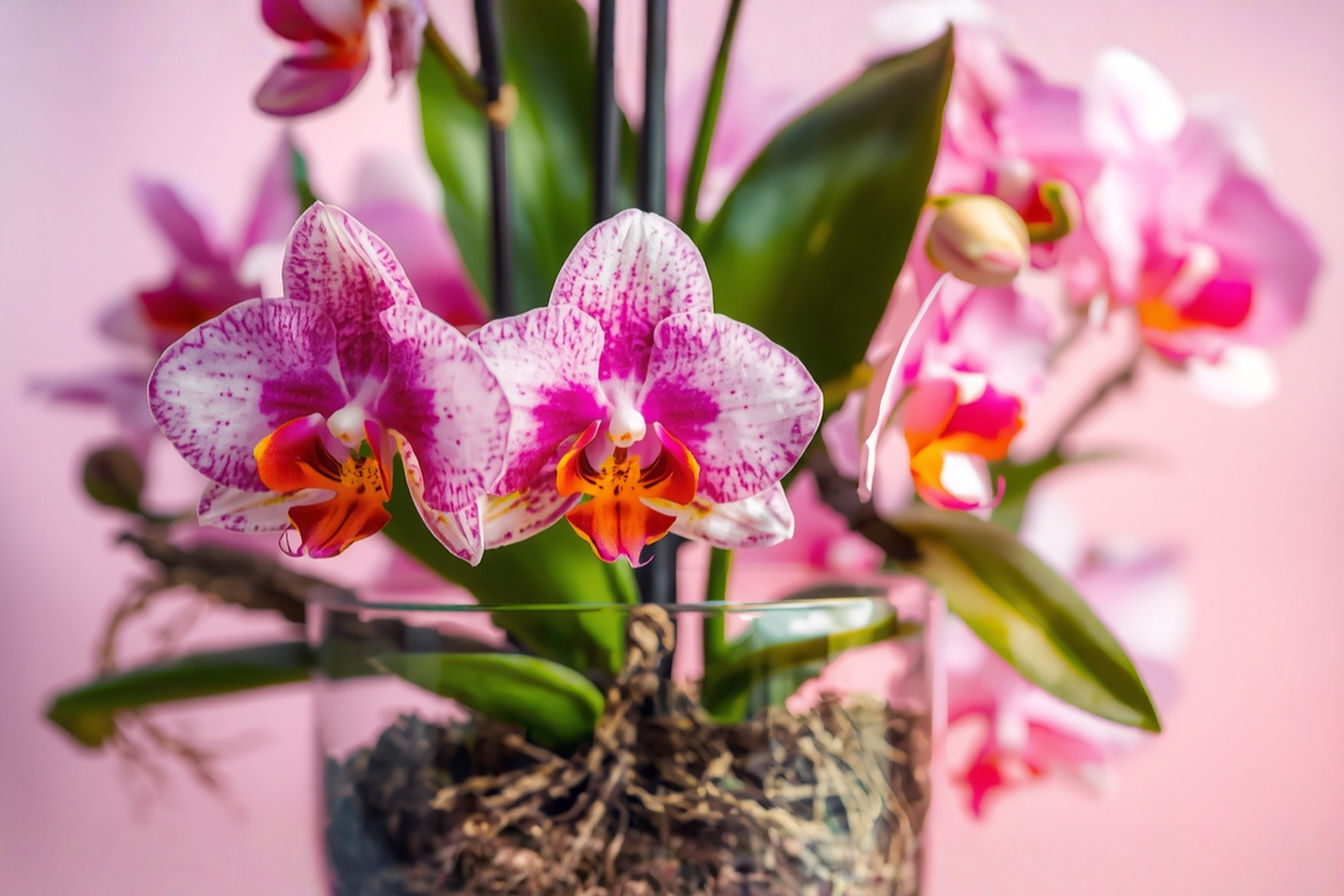This post may contain affiliate links. If you make a purchase through these links, we may earn a commission at no additional cost to you.
Transforming your living space into a lush oasis has never been more accessible. Indoor gardening offers a perfect solution for plant enthusiasts lacking outdoor space or those simply wanting to bring nature’s beauty inside. This comprehensive guide will walk you through everything you need to know to start and maintain a thriving indoor garden, even if you’ve never cared for a plant before.
Understanding the Basics of Indoor Gardening
Indoor gardening differs significantly from outdoor cultivation in several fundamental ways. When plants grow inside your home, you become responsible for recreating optimal natural conditions. This environmental control presents both challenges and advantages for the novice plant parent.
The indoor environment shields your plants from extreme weather, seasonal changes, and many outdoor pests. This protection allows you to grow a wider variety of plants year-round than your local climate might otherwise permit. Your houseplants remain unaffected by droughts, unexpected frosts, or scorching summer heat waves.
However, indoor settings introduce different challenges. Your plants rely entirely on you for their basic needs. The four essential factors for indoor gardening success include proper lighting, appropriate watering, suitable soil, and maintaining optimal environmental conditions. Mastering these elements forms the foundation of successful indoor gardening.
Many beginners struggle with providing adequate light or develop inconsistent watering habits. Others might select challenging plants that require specialized care beyond their current skill level. Understanding these potential pitfalls before beginning will dramatically increase your chances of creating a flourishing indoor garden.
Selecting the Right Plants for Beginners
Choosing appropriate starter plants significantly impacts your early gardening experience. The ideal beginner plants forgive occasional neglect and adapt well to indoor conditions. These resilient varieties allow you to build confidence while developing essential plant care skills.
Snake plants top the list of virtually indestructible houseplants. These striking plants tolerate low light and infrequent watering, making them perfect for busy individuals or those prone to forgetting their plant care routine. Their architectural form adds visual interest to any room, while their air-purifying qualities improve your home’s atmosphere.
Pothos earns its reputation as the ultimate starter plant with good reason. This trailing beauty adapts to various light conditions and clearly communicates its watering needs through drooping leaves. Its cascading vines create dramatic displays as it grows, rewarding even minimal care with lush foliage.
For those interested in practical plants, an indoor herb garden offers both beauty and utility. Herbs like mint, basil, and chives thrive on sunny windowsills, providing fresh flavors for cooking while requiring minimal space. The satisfaction of harvesting homegrown herbs for meals provides immediate reinforcement for your gardening efforts.
Surprisingly, some vegetables grow quite successfully indoors. Leafy greens like lettuce and spinach require relatively little space and mature quickly. Cherry tomatoes and peppers can produce fruit indoors when given adequate light, either from a bright window or supplemental grow lights.
When selecting your first plants, consider your specific living situation. Assess the available light in your space, how often you’re home to care for plants, and whether you have pets or children who might interact with your green additions. These considerations will help narrow your choices to plants that match your lifestyle.
Essential Supplies for Your Indoor Garden
Gathering the right equipment before bringing plants home sets you up for success. While indoor gardening doesn’t require extensive gear, certain fundamental supplies ensure your plants receive proper care from day one.
Containers serve as more than mere decorative elements. The right pots provide adequate drainage, appropriate space for root development, and contribute to your home’s aesthetic. Beginners should select containers with drainage holes to prevent waterlogged soil, which leads to root rot. Saucers placed beneath pots protect furniture while containing excess water.
Material choices matter when selecting containers. Terracotta pots allow soil to breathe but dry out more quickly than glazed ceramic or plastic options. This porosity makes terracotta ideal for plants susceptible to overwatering. Plastic containers retain moisture longer, benefiting plants that prefer consistently damp soil.
The growing medium provides more than just structural support for your plants. Quality potting soil delivers essential nutrients and creates appropriate air spaces for root health. Avoid using garden soil from outside, as it compacts easily in containers and may harbor pests or diseases. Instead, invest in commercial potting mixes formulated specifically for indoor plants.
Different plant varieties sometimes require specialized soil. Succulents and cacti need fast-draining mixes, while tropical plants often prefer moisture-retentive blends. As you advance in your indoor gardening journey, you might experiment with creating custom soil mixes tailored to specific plant needs.
Your basic toolkit should include a watering can with a narrow spout for precise watering, pruning shears for removing damaged growth, and a spray bottle for misting humidity-loving plants. A soil moisture meter helps eliminate the guesswork from watering decisions, particularly valuable for beginners still developing their plant care intuition.
Creating the Perfect Environment
The environment you provide directly impacts your plants’ health and growth. Understanding and managing light, temperature, humidity, and air circulation creates conditions where your indoor garden can thrive.
Light stands as perhaps the most critical factor in plant health. Different plants evolved for various light conditions in their natural habitats. Most common houseplants fall into three basic categories: those requiring bright indirect light, medium light, or low light tolerance.
Assess the natural light available in your home by observing how sunlight moves through your space throughout the day. South-facing windows typically provide the brightest conditions, while north-facing windows offer gentler, diffused light. East and west exposures provide moderate morning or afternoon sun, respectively.
When natural light proves insufficient, supplemental grow lights extend your growing options. Modern LED grow lights consume minimal electricity while providing full-spectrum light that plants can utilize for photosynthesis. These lights allow you to grow plants in otherwise unsuitable locations like windowless bathrooms or basement spaces.
Temperature affects plant metabolism and growth rates. Most houseplants originated in tropical or subtropical regions and prefer temperatures between 65-75°F (18-24°C). Protect your plants from drafty windows, heating vents, and air conditioning units that create temperature fluctuations or hot spots.
Humidity levels in most homes fall below what many houseplants prefer, particularly during winter when heating systems dry indoor air. Increase humidity around your plants by grouping them together, placing them on pebble trays filled with water, or using a small humidifier for moisture-loving varieties.
Air circulation prevents stagnant conditions that can lead to fungal issues. Gentle airflow strengthens plant stems and reduces pest problems. Occasionally opening windows when weather permits or using a small fan on the lowest setting maintains healthy air movement without stressing your plants.
Watering Techniques for Indoor Plants
Mastering watering techniques prevents the most common cause of houseplant demise. Developing proper watering habits requires understanding your plants’ individual needs and recognizing their signals.
Rather than adhering to a rigid schedule, learn to assess when your plants actually need water. Insert your finger about an inch into the soil—if it feels dry at that depth, most plants are ready for watering. Some plants prefer their soil to dry completely between waterings, while others need consistently moist conditions.
The weight of your plant’s container provides another reliable indicator. Lift your potted plants occasionally to gauge their weight. A significantly lighter pot generally indicates dry soil requiring water. With practice, this method becomes surprisingly accurate.
When watering, apply enough to thoroughly moisten the entire root ball. Continue until water flows from the drainage holes, indicating complete saturation. This approach encourages deep root development rather than shallow surface roots that leave plants vulnerable to drought stress.
Avoid the common mistake of frequent, shallow watering. This practice creates weak root systems and can lead to salt buildup in the soil. Similarly, allowing plants to sit in standing water causes oxygen deprivation in the root zone, potentially leading to root rot.
Seasonal adjustments to your watering routine accommodate changing growth patterns. Most plants require less frequent watering during winter dormancy when growth slows. Conversely, actively growing plants in warm, bright conditions may need more frequent hydration during spring and summer months.
Feeding and Nourishing Your Indoor Plants
Proper nutrition supports vibrant growth and resistance to pests and diseases. Understanding fertilization basics ensures your plants receive appropriate nourishment without harmful excesses.
Houseplants confined to containers eventually deplete the nutrients available in their potting mix. Supplemental feeding replenishes these essential elements. Fertilizers designed specifically for houseplants typically provide balanced ratios of nitrogen, phosphorus, and potassium—the primary nutrients plants require.
Most indoor plants benefit from fertilization during their active growing season, generally spring through early fall. Apply fertilizer at half the recommended strength monthly during this period. During winter months, most plants enter a resting phase and require little to no supplemental feeding.
Organic fertilizer options include compost tea, worm castings, and fish emulsion. These natural alternatives release nutrients gradually, reducing the risk of fertilizer burn. Though they may require more frequent application than synthetic options, many gardeners prefer their sustainable nature.
Recognizing nutrient deficiencies allows for timely intervention. Yellowing leaves often indicate nitrogen deficiency, while purple-tinged foliage suggests phosphorus shortage. Browning leaf edges might signal potassium deficiency or fertilizer salt buildup requiring soil flushing.
Managing Pests and Diseases
Even indoors, plants occasionally face pest challenges. Identifying and addressing these issues promptly prevents widespread infestation and plant damage.
Common indoor plant pests include spider mites, mealybugs, scale insects, and fungus gnats. Regular inspection of your plants, particularly the undersides of leaves and leaf junctions, helps catch problems early. Quarantine new plants for a week or two before introducing them to your existing collection to prevent pest transmission.
Preventive measures significantly reduce pest issues. Maintaining appropriate humidity, avoiding overwatering, and ensuring good air circulation create an environment less hospitable to many common pests. Healthy plants naturally resist pest pressure better than stressed specimens.
Natural remedies offer effective first-line defense against most indoor plant pests. A solution of mild soap and water applied with a soft cloth removes many pest types. Neem oil provides broader protection against various insects while being relatively gentle on plants and safe for indoor use.
Know when to treat versus when to discard severely infested plants. Sometimes removing a heavily infested specimen protects your remaining collection more effectively than prolonged treatment attempts. This decision, while difficult, often saves time, effort, and additional plants in the long run.
Propagation Basics for Beginners
Multiplying your plants through propagation brings immense satisfaction while expanding your indoor garden economically. Several straightforward methods make plant propagation accessible even to complete beginners.
Stem cuttings offer the simplest propagation method for many popular houseplants. Pothos, philodendrons, and many trailing plants readily grow roots when stem segments containing leaf nodes contact water or moist soil. This technique allows you to create new plants identical to their parents.
Leaf propagation works wonderfully for succulents and some other varieties. A single healthy leaf placed on slightly damp soil often develops tiny roots and eventually produces a new plant. This method requires patience but rewards with miniature versions of your favorite plants.
Division suits plants that naturally form clumps or produce offshoots. Spider plants, peace lilies, and snake plants respond well to gentle separation into multiple plants during repotting. This approach provides instant full-sized plants rather than waiting for cuttings to mature.
Avoid common propagation mistakes like taking cuttings from unhealthy plants, using dull cutting tools that crush stems, or attempting to propagate during dormant periods when success rates drop. Clean tools, healthy parent plants, and proper timing significantly increase propagation success.
Indoor Gardening in Small Spaces
Limited space needn’t restrict your indoor gardening ambitions. Creative solutions allow plant cultivation in even the tiniest apartments or dorm rooms.
Vertical gardening maximizes growing space by utilizing wall areas. Hanging planters, wall-mounted pockets, and tiered stands transform unused vertical space into prime growing real estate. These systems work particularly well for trailing plants that naturally cascade downward.
Window gardens make excellent use of existing light. Narrow shelves installed beneath windows or specialized window boxes mounted outside create growing spaces that receive natural light without consuming floor or counter space. These areas work wonderfully for herbs and small flowering plants.
Furniture surfaces offer additional growing opportunities. Plant stands with multiple levels, bookshelves with adequate light, and even the tops of cabinets provide valuable real estate for your green collection. Ensure these surfaces can withstand occasional water spills to prevent furniture damage.
Creative container choices adapt to space limitations. Wall-mounted magnetic planters, repurposed hanging shoe organizers, and under-shelf containers all create growing space in otherwise unused areas. These unconventional approaches often become conversation pieces while satisfying your plant addiction in limited quarters.
Seasonal Care Adjustments
Indoor plants respond to seasonal changes despite their protected environment. Adjusting your care routine throughout the year accommodates these natural cycles.
Winter presents several challenges for indoor gardens. Shorter days reduce available light, while heating systems lower humidity and alter temperature patterns. During this period, most plants enter a semi-dormant state requiring less water and no fertilization. Moving plants closer to windows or supplementing with grow lights compensates for reduced daylight.
Summer brings its own considerations. Intense direct sunlight through windows can scorch even sun-loving plants. Sheer curtains or temporary relocation during the hottest hours protects sensitive varieties. Increased growth during this season typically requires more frequent watering and regular fertilization to support active development.
Light changes throughout the year may necessitate plant rotation or relocation. A spot that provides perfect light in winter might become too intense during summer months. Paying attention to how seasonal light patterns affect your specific growing areas helps you proactively adjust plant placement.
Transitioning between seasons should happen gradually. Sudden changes in light, temperature, or humidity stress plants. Incremental adjustments to watering frequency, fertilization, and light exposure allow your plants to adapt comfortably to seasonal shifts.
Conclusion
The journey into indoor gardening offers rich rewards beyond simply adding greenery to your home. Your growing knowledge creates a foundation for lifelong plant stewardship while transforming your living space into a vibrant, living environment.
Remember that every experienced plant enthusiast began as a novice. Each wilted leaf or pest challenge provides valuable learning opportunities that strengthen your gardening skills. Approach your indoor garden with curiosity and patience, celebrating successes while learning from inevitable setbacks.
As your confidence grows, so too will your plant collection and abilities. The principles covered in this guide establish a solid foundation that supports increasingly advanced techniques. From this beginning, you might explore specialized plant groups, experiment with more challenging varieties, or even create elaborate indoor growing systems.
Your indoor garden ultimately reflects your personal style and preferences. Whether you cultivate a minimalist collection of architectural specimens or develop a lush jungle bursting with variety, the plants you choose create a uniquely personal expression of your relationship with the natural world.
Start small, observe closely, and enjoy the process of becoming a successful indoor gardener. The living tapestry you create will reward your efforts with beauty, improved air quality, and the special satisfaction that comes from nurturing life in your home.






